
- Useful Info
- world heritage
- historical palaces
- streets and squares
- land of motors
- modenese cuisine


Duomo of Modena

Duomo di Modena (Modena Cathedral)
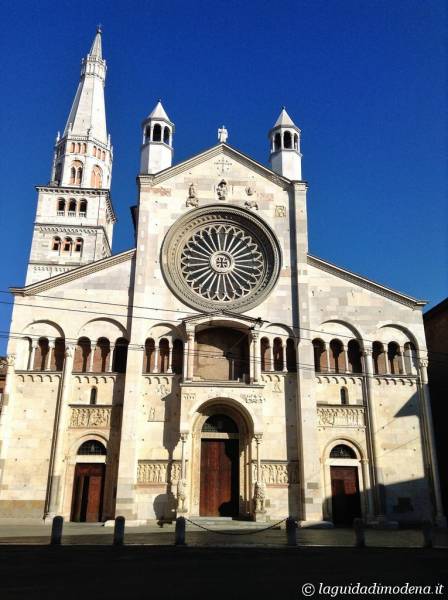
History of the Modena Cathedral
The foundation stone for the new Cathedral was laid on 9 th June 1099 , incredibily when the archibishop’s see was vacant. The Modenese community desired a new Duomo to finally put their Patron Saint Geminiano (312-397) to rest. The architect was Lanfranco ; the sculpture-work by Wiligelmo . The construction went ahead fast from the apses, and in 1106 the Saint was solemnly laid to rest in the new cript. Pope Paschal II and the feudal lady Matilde di Canossa attended the ceremony (this is the story told by the Relatio de innovatione ecclesiae Sancti Geminiani ac de translatione eius beatissimi corporis visible in the Museo del Duomo°° ). In 1173 the Congress of the Lombard League (Modena was a member of it) was held here. The official consecration of the church took place in 1184 with Pope Lucius III (the severe auctor of the decretal Ad abolendam against heresy). From the end of the XII century, replacing the followers of Lanfranco and Wiligelmo, the Maestri Campionesi started working on the Cathedral, remaining here until the middle of the XIII century. They made several Gothic modifications, such as the rose window, the lateral portals of the facade, the Porta Regia on Piazza Grande , the false transept, many internal decorations, the wonderful spire of the Ghirlandina tower). In the first half of the XV century the ancient wooden trusses were substituted by the cross vaults in brick and the aisles were enriched by works of arts and monuments. The Cathedral has always been at the heart of the town life. For example, the legend says that the Emperor Charles V risked breaking a leg when slipping in the nave, while visiting Modena. During the Baroque period, the church was considered bare and so it was decorated by ephemeral machines in the exalted style of the epoch. Someone even proposed destroying the Duomo to build a new church: fortunately his whim was not satisfied. Other alterations were made in the XVIII century, particularly in the central apse of the crypt, and at the end of the following century, when the Cathedral was cleaned up from all the unnecessary trivia. A solemn Te Deum was performed when Napoleon passed through, and another one when the Estense Dukes returned to Modena after being re-enstated. Recently the Duomo has been restored in order to conserve it in the best way possible, expecially protecting it from smog and subsidence. So, one can admire the Cathedral as thousands of people have done in 1000 years of history.
Exterior of the Modena Cathedral
The Cathedral, as many of the churches of the same period, is built in a west-east direction: so the facade is the western side, the right side the southern one, and so on. The facade , on Corso Duomo, was planned, like the rest of the edifice, by the famous architect Lanfranco . The height is exactly the same as the width, lending the church a robust but gentle harmony. All around the exterior, it is decorated with loggias closed under arches, and adorned with wonderful capitals and statues . Three doors are open, though originally only the central one existed: modifications, like the rose window, carried out by the Maestri Campionesi, who worked here from about 1170 to 1320. The four large reliefs by Wiligelmo are exceptionally important, as they symbolize the renaissance of art after the medieval centuries. They were put on the same level as the central ones, so that people who could not read were able to find the illustrations of the biblical stories they had heard about. Starting from the left, in the first relief: God in an ‘almond’ (symbol of inner life and light) with an open book in his hands, over two angels; Adam’s creation and Eve’s from one of his rips (the caption are still visible nowadays); the orginal sin (the protagonists eating the apple offered by the snake, and covering themself with fig leaves). Second relief: God points disapproving at Adam and Eve, who tear their hair, while an angel drives them away from the Eden; they are then completely dressed working around a plant, their heads bowed under some arches. Third relief: the first men after the original sin. Cain and Abel offer a lamb and some ears of corn to God, then Cain kills his brother hitting him on the head and is reproached by God. Fourth reliefs: Cain himself is killed by the blind Lamech as it was predicted (he shoots an arrow with his eyes closed); Noah and his wife during the Flood in an ark which is vaguely similar to the Duomo (the believers are saved by the church is the message); Noah with his sons Sem, Cam and Iafet go out of the ark to populate the world. The Major Portal is really interesting and was decorated by Wiligelmo himself. The column-bearing lions are Roman, probably taken from an ancient grave. The extrados is decorated with a rich acanthus tree supported by two male telamons: where men, bizarre and natural beings are hidden (for example, a basilisk, a mermaid, a griffin, vipers, hawks, cranes). The archivolt presents at the top a two-faced Janus, the Roman protector of doors. In the intrados, prophets (in italian: Mosè, Aronne, Daniele, Zaccaria, Michea, Abdia, Abacuc, Exechiele, Isaia, Geremia, Malachia, Sofonia. Their names are in the respective niches). On the left of the Portal, a wonderful inscription , supported by the prophets Enoc and Elijah (symbol of long life for the Cathedral), commemorates the laying of the foundation stone (6th june 1099) and Wiligelmo, the creator of the sculpture work: « Inter scultpres quanto sis dignus onore claret scultura nunc Vuiligelme tua » (in Latin). Also at the sides of the Portal, two panels by Wiligelmo represent angels leaning on upside-down torches (in the left one with an ibis, probably symbol of the sinner’s death). At the corners of the avant-corps, on the left two deer are wrestling with a single head, on the right, two lions trying to break free from a snake (symbol of the man against sin). Higher than the rose window, the so-called Saint Geminiano cross has a really particular shape. Under it, the images of the four Evangelists, a Christ in ‘almond’ shape by the Campionesi and Samson with the lion . An angel on the top and two turrets (finished in the first years of the XX century) complete the astonishing facade of the Duomo.
Southern Side
The arches with galleries continue on this side of the Duomo, decorated by original figures sculptured in the stone. After the calle dei Campionesi, the narrow street on the right of the facade, behind a little gate, the Porta dei Principi (that is Princes’ door) stands, through which the persons to be baptized passed into the church. The portal was by the so-called Maestro of Saint Geminiano, a contemporary follower of Wiligelmo, modelling it on the major one in the facade. Besides the two column-bearing lions, in the intrados one can see the Apostles (where Matthias replaces Judas the traitor); in the extrados, an inhabited spray. The architrave is decorated with six episodes from Saint Geminiano’s life : he sets off to the Orient on horseback and by ship to exorcise the daughter of the Emperor Jovian (a curious winged demon is liberated); he then receives gifts and returns to Modena, where he dies and is buried like a mummy. The intrados of the architrave itself is particular, as a lamb is kept up by two angels flying in the sky, and looked upon from the corners by Saint John the Baptist and Saint Paul. On the right of the prothyrum, the Fight between Jacob and the angel and Truth wrenching the tongue of the fraud . Then, a big incision commemorates the consecration of the Duomo of Modena, in 1184, by Pope Lucius III. A text also commemorates the visit of Pope John Paul II in June 1988. The side open to the Piazza Grande is dominated by the Porta Regia , built in the first years of the XIII century by the Maestri Campionesi. Wrought in red Veronese marble, it is characterized by an extraordinary embrasure with interlaced columns and roses and by the two lions with prey under their paws. The stucture is surmounted by a niche with a statue of the Patron Saint Geminiano (the original one is in the Museums of the Duomo°° ) and an incredible bone of a whale. The balcony is completed with a lion at the top. Going right, the dummy transept is visible, made by the Maestri Campionesi while building the internal choir, culminating in another lion. In 1501 the pulpit was added by Jacopo and Paolo da Ferrara, representing the four Evangelists, whereas the relief realized in 1442 by Agostino di Duccio was placed here in 1584. It tells the same stories of Saint Geminiano as the Porta dei Principi (the recovery of the Emperor’s daughter, the gifts and the funeral with the miracle of the fog which saved Modena from the barbarians). Between the pulpit and the relief, two plaques commemorate the oath of Pontida on the field of Legnano, when the Lombard League was born against the Emperor Frederick Barbarossa, and the creation, in 1855, of the ecclesiastic province of Modena thanks to Pope Pius IX.
Already finished in 1106, the year of the translation of Saint Geminiano’s corpse (according to the Relatio conserved in the Museums of the Duomo°° ), the three apses are one of the things to notice about the Cathedral. Here one can appreciate the design of the loggias (which run all around the perimeter) and the splendour of the twenty different types of stone which cover the church. In the central one, a plaque praises the architect of the Duomo and surmounts a window decorated with flowers. The Modenese measures which are carved in the wall are really interesting: the merchants in Piazza Grande could come here (where the ‘Buona Stima’ office stood) to control the goods against fraud. From the left, the brick, the step, the pole and the pantile: the whole Duomo was built following these measurements, and in fact it bears them out exactly.
Northern Side
Along the northern side of the Duomo via Lanfranco was opened at the end of the XIX century, separating the church from the other edifices of the sacristry and the presbitery (where now the Museums of the Duomo°° are housed). Here one can admire the longest perspective of the architectonic motive with arches and gallery which characterizes the whole Cathedral. There are also wondeful metopes and capitals: each one is different from the other, representing imaginary and naturalistic subjects. Near the Ghirlandina tower, the Porta della Pescheria (that is ‘Portal of the fish market’) or “delle Donzelle” was the place where pilgrims coming from the via Emilia°° entered the church. This is the reason why the sculptures are of international and pagan subjects. The name derives from the market which once stood here and from the fact that it was the door dedicated to women. A covered passage connects the church to the sacristry, whereas the preceding arches were built in the Gothic style probably in 1338, to avoid the bell tower leaning towards the Cathedral. The portal is characterized, like the others, by a pair of column-bearing lions. The sculpture is of an exceptional interest. In the extrados telamons hold up an inhabited spray. In the intrados, the months of the year are represented: January cures a pig; February is wrapped in a blanket in front of a fire; March cuts the grapevine; April brings flowers; May leads a horse as it was the period when wars started; June cuts the grass with a sickle; July reaps the wheat; August thrashes it; September makes wine in a barrel; November sows and December cuts the wood. The cycle of the seasons is so represented, as was the unescapable rhythm of life at the time. In the architrave there are fables of French origin: a Nereid hunts a Triton; two cocks bring in a fox pretending to be dead; the storks are trying to free themselves from a snake; a wolf and a crane belong to Phaedrus fable. However, the most incredible subject is the one of the arch. In the keystone, Mardoc holds Guinevere prisoner in a castle, while knights are trying to free her. Among them, King Arthur and Galvagino, as the caption explains: it is the story of the Arthurian legend (or of the Knights of the Round Table). The astonishing thing is that the first known written edition dates back to 1136, whereas the portal was made twenty years before! So it is the most ancient representation of the legend in the world, brought across Medieval Europe by the pilgrims.
Interior of the Modena Cathedral
The interior of the Duomo is entirely built in brick, apart from some elements (like the capitals), which are in marble. Reflecting the exterior – they were planned as one – it is divided into a nave and two aisles. Looking down the middle, pillars and columns alternate, creating four cross vaults and a dummy transept near the choir, just before the apses. At half height, windows with three lights open on a false women’s gallery , never carried out. Higher, big windows give light to the church. Starting from the left aisle, on the wall the tomb of bishop Roberto Fontana by Tommaso Loraghi and Ercole da Ferrara (1652); then, a wooden statue of the Patron Saint Geminiano, from the first part of the XIV century by the Campionesi and a marble door leading to via Lanfranco. The great Altare delle Statuine (1440-1) was entirely made in terracotta by Michele da Firenze; on the altar, the Madonna della Piazza or delle Ortolane , a fresco removed from the wall of the Cathedral, painted in 1345 (the name is due to the fact that it was put in the square for the devotion of the market people). In a sculptured marble altar, Saint Sebastian between the Saints Jerome and John by the famous artist Dosso Dossi (1518-21) surmounts a frontal in silver and gold copper of the early XIX century. On the portal of the nave, the tomb of bishop Francesco Ferrari (1510), among various reliefs, is under the wonderful rose window, the stained glass designed by Giovanni da Modena. Two holy-water stoups originate from really ancient Roman capitals. The most important families of Modena also have their coats of arms cut in the keystones of the vaults (finished in 1453). On the left, around the second pillar, the Pulpit by Enrico da Campione (1322), painted in the following century with stories of Saint Ignatius’ life and sculptured with standing figures along the parapet (XV-XVII century). Over it, Madonna col Bambino , a fresco of the middle of the XIV century; under it, Madonna del latte . Near the second pillar on the right, a little wooden seat, today folded up, is known as the seat of the executioner , probably because he used it during cerimonies. The symbol of the Modenese archdiocese hangs from the third arch. In the right aisle, after the funeral monument of Lucia Rangoni by Marco Antonio da Morbegno and Anelino da Mantova (1515), there is the imposing Cappella Bellencini : in a beautiful frame of terracotta, the Last Judgment was painted by Bartolomeo and Agnolo degli Erri or by Cristoforo da Lendinara in the XV century (notice the half-naked men at the bottom, the triptych, the angel with sword and scales and the Saints). In the chapel there is a nice baptismal font in rose marble. Then, the interior of the Porta dei Principi, the subtle Crib in terracotta by Antonio Begarelli (1527) and the grave of Francesco Molza (1516, by Bartolomeo Spani). At the end of the aisles, descending some steps, there is the crypt of the Patron Saint Geminiano . Here many graves fill the walls and the floor, but the characterizing elements are the capitals of the numerous columns (sometimes recuperated, sometimes preceding Wiligelmo himself). In the right apse, the Madonna della Pappa or Porrini crib by Guido Mazzoni in painted terracotta (1480-5). A parapet indicates the area of Saint Geminiano’s grave , visible under a crystal shrine: the columns which substain it (IV century AD) once allowed the believers to pass under it as a sing of devotion. The whole apse was decorated in the XVIII century with marble work. Finally, the left apse conserves a Crucified and a golden urn. Back in the nave, the wonderful parapet and ambo were sculptured and painted, in the years 1165-1225 by the Maestri Campionesi. In the first, from the left: the washing the feet, the Last Supper , Judas’s kiss, Pontius Pilate and Jesus, the flagellation and Cyreneus. In the second, from the left: the Learned Men of the Church and the benedictory Redeemer among the Evangelists, Jesus and Saint Peter. The whole structure is borne by four column-bearing lions (one of them being bitten on the neck by its prey, two are clawing at knights in armour with swords, the fourth traps maybe a dog) and by two telamons , symbolizing the pain of hard work. Capitals, reliefs and marble roses fill the entrance to the crypt. With backs turned to the rose window, one can go up to the third level of the church, through the left stair way: this raised area is occupied by the presbytery. On the wall, the tomb of Claudio Rangoni, by Niccolò Cavallerino, based on a project by the famous Giulio Romano (1542). Then, two pieces of sculpture: a marble Madonna col Bambino and Saint Geminiano saving a child falling from the Ghirlandina by Agostino di Duccio (1442). Under a modern organ, four pieces of inlaid woodwork with the Evangelists by Cristoforo da Lendinara (1477) and the wooden high-backed chairs. In the apse, a precious Polittico con Incoronazione di Maria, Corcifissione and Saints by Serafino Serafini (1385) surmounts an altar dating back at least to the X century. The door which is opened near the stair conducts, through a raised passage, to the astonishing sacristry , painted in 1507 by Francesco Bianchi Ferrari and furnished with stalls inlaid by the Lendinara (XV century). There are also canvases by Modenese artists such as Francesco Vellani and Bernardino Cervi. In the nave, there is a XIII-century enclosure with little pink and white columns; on the top, the latin inscription “IESUS CHRISTUS HERI ET HODIE IPSE ET IN SAECULA”, and near it a beautiful spiral marble column. The floor, decorated with marble designs, the XVII-century wooden lectern and the monumental wooden Crucified hanging from the vaulting (second half of the XIII century) are unforgettable. On the wall, the high-backed chairs inlaid in wood by Cristoforo and Lorenzo da Lendinara (1465), of which the central two have also a little cupola. The main altar, dating back to the XIII century, supported by six pairs of columns and by a bigger spiral one, symbolizing Christ among the Apostles. The painting in the apsidal conch is recent: it was carried out in the XIX century by Forti and Migliorini, inspired by the classical themes of the Roman mosaics. In the right apse, apart from the many windows opening into the dummy transept over Piazza Grande , there are rich candelabrums, a marble altar and the golden XIX-century tables with Santa Lucia and Sant’Eligio . The handrail finishes with the head of a lion, whereas on the wall there are still now remains of the paintings which once covered the interior of the Duomo (XIII-XIV century). Here opens the Porta Regia, the main access to the church from Piazza Grande .
[images by the Author with the kind permission of the Duomo]

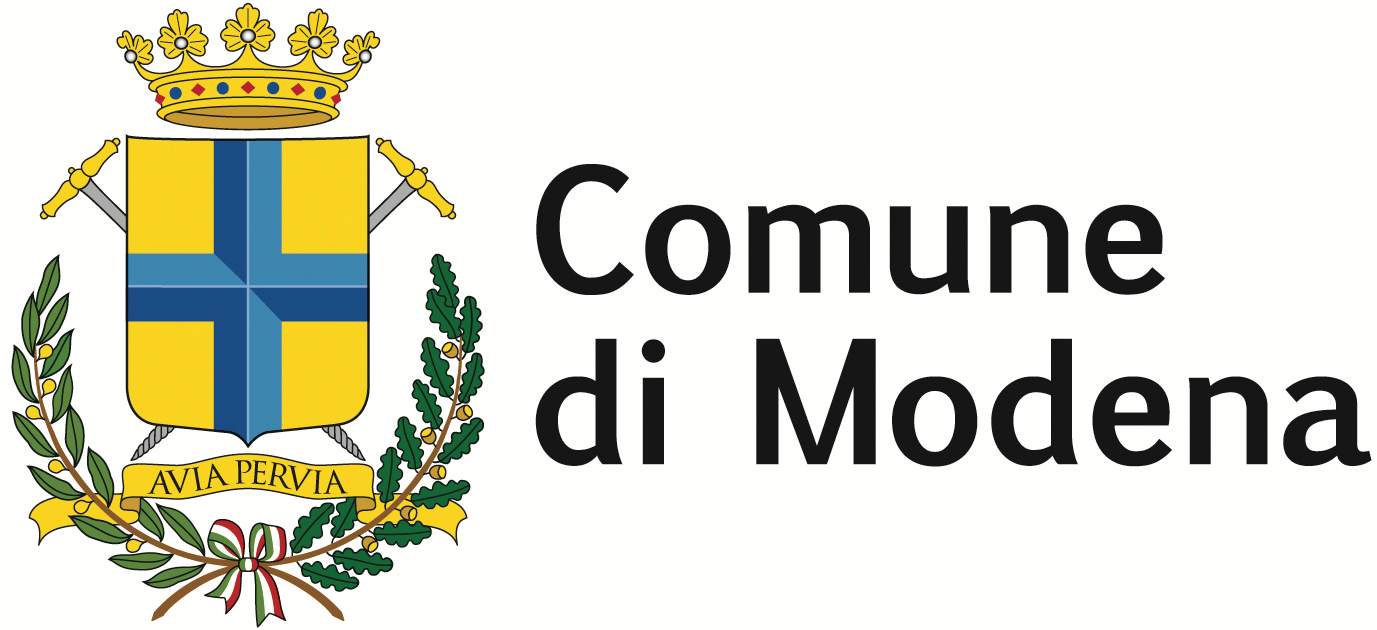
425 - Visita alla Cattedrale
Conoscere il Duomo, la Torre e la Piazza, riconosciuti dall'Unesco Patrimonio dell'Umanità. Accrescere il senso di appartenenza al proprio territorio e la consapevolezza di essere eredi e custodi del patrimonio da trasmettere. Osservare l'architettura della Cattedrale e coglierne le caratteristiche innovative. Osservare le splendide decorazioni scultoree che arricchiscono le mensole, i capitelli, le lastre della Genesi, il portale principale della facciata e le porte della Pescheria e dei Principi.
Francesca Piccinini, direttrice Museo Civico Serena Roncaglia, laboratorio didattico Tel. 059 2033121 [email protected]
Calendario Per informazioni e/o eventuali variazioni sulle date proposte gli insegnanti potranno mettersi in contatto telefonando al numero 059/2033121 (lun-ven 8.30-12.30) o scrivendo a [email protected]
Nel caso in cui non si utilizzi il contributo del Comune sarà possibile pagare attraverso bonifico oppure all'operatore durante la visita. Su richiesta sarà possibile effettuare due collegamenti in due distinti momenti, ad esempio se il gruppo classe dovesse essere diviso. In questo caso ogni collegamento avrebbe un costo di € 40.00.
Si possono visionare e scaricare documentazioni e materiali relativi al progetto A scuola con l'Unesco al seguente link: www.unesco.modena.it cliccando la voce Didattica e divulgazione.
Fondato il 9 giugno del 1099, il Duomo di Modena è un meraviglioso esempio di arte romanica. L'incarico di progettare la Cattedrale fu affidato a Lanfranco il quale diede vita a un'architettura nuova che influenzò profondamente l'arte romanica fiorita dopo di lui. Sulla struttura si innestò, in uno straordinario rapporto di armonia, la scultura di Wiligelmo. A lui e ad altri valenti scultori si devono le lastre della Genesi sulla facciata, il portale principale della facciata, i portali della Pescheria e dei Principi. Opera dei Maestri Campionesi, attivi a Modena dalla fine del XII agli inizi del XIV secolo, sono invece la grande Porta Regia affacciata su Piazza Grande, il rosone e il falso transetto. All'interno si conservano il Pontile con Scene della Passione e altre opere importanti: l'Altare delle statuine di Michele da Firenze (1440/41) il coro intarsiato dei Lendinara (1461/65), la Cappella Bellincini (1475 ca), la Pala di san Sebastiano di Dosso Dossi(1518/21), la Madonna della Pappa di Guido Mazzoni (1480/85 ca) e il Presepio di Antonio Begarelli (1527).
Modalità alternativa (prima di prenotare contattare il referente)
Visita Virtuale La visita guidata può anche essere svolta da remoto al costo di 60 euro, con il supporto di materiale multimediale.
In the worlds jungle
An architectural, historical, and cultural travel blog..
Monumental highlights to visit in Modena, Italy
Modena is a city that captures the beauty of Italian culture, history, and architecture. While these are the monumental highlights to visit in Modena, the city has much more to offer. From exploring the local cuisine to enjoying the beauty of the surrounding countryside. Your trip to Modena is guaranteed to be an unforgettable experience. Whether you’re planning a short break or a longer stay, Modena is for sure worth a visit.
Table of Contents
Duomo di Modena
The origins of Duomo di Modena date back to the early 11th century when Modena was ruled by the wealthy and powerful Boniface III. He desired to leave behind a lasting legacy and so Boniface III commissioned the construction of a grand cathedral. The work began in 1099 and was carried on by his son Anselmo in 1106. It took over 200 years for the cathedral to be complete, but it was worth the wait. The cathedral features an impressive fusion of Romanesque and gothic styles, making it a unique specimen of medieval architecture.
One of the most significant features of the cathedral is its portico, which is a fine example of the Romanesque architectural style. The portico’s walls are adorned with intricate reliefs depicting biblical and historical scenes. The central and right-hand doorways, in particular, are renowned for their bronze depictions of biblical scenes, made by the celebrated sculptor Wiligelmo.
The Cathedral’s interior is equally impressive, featuring a vaulted nave, transept, chancel and ambulatory, all of which are decorated with frescoes dating back to the 13th century. Among these frescoes, the most noteworthy is the cycle of frescoes by Gianfranco Ferrara, illustrating the life of St. Geminianus, Modena’s patron saint. Visitors can also marvel at the stunning rose window, which is known for its delicate tracery and colourful stained glass.
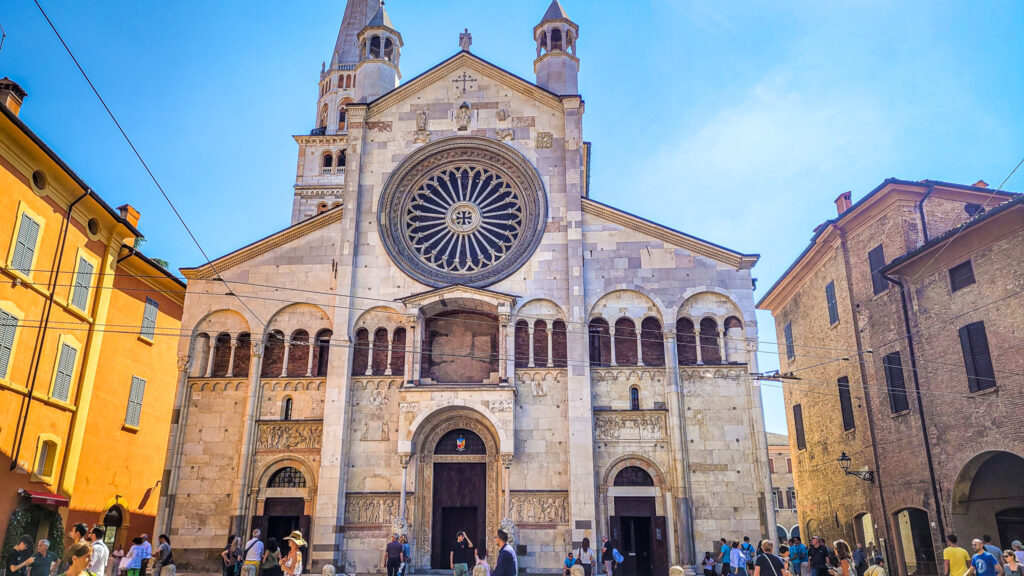
Bell tower & museum
The bell tower is 88 metres high and the most prominent feature of the cathedral. It is also the tallest bell tower in Italy that belongs to a Romanesque church. The tower is created with a series of carvings and sculptures, and visitors can enjoy panoramic views of Modena and the surrounding countryside from its summit.
The Cathedral Museum is worth a visit if you like history and art. The museum houses an extensive collection of art treasures, including illuminated manuscripts, jewellery, and sculptures. Notable items include the bust of St. Geminianus sculpted by Girolamo Donnino in 1529 and the Madonna and Child by Guido Mazzoni. The cathedral, the tower and Piazza Duoma are on the UNESCO World heritage list .

Piazza Duomo
Piazza Duomo has been around for more than a millennium and has seen immense changes throughout history. During the Roman Empire, the square served as a hub for commercial activities, and an enormous complex of trading shops was built in its confines. Later, during the Middle Ages, it played an essential role as a meeting point for the locals and was consequently revamped several times as per the different architects’ needs and desires. The architectural evolution of the square spans over centuries and speaks to the numerous artistic influences that have passed through Modena, leaving their mark on the city’s landscape.
The stunning architecture of the square is a mix of Romanesque and gothic art. Some of the most significant structures in the square are the cathedral, the Torre Ghirlandina, and the Piazza Municipio. Piazza Duomo also houses several museums. The most notable of these is the Museo del Duomo. This museum houses a rich collection of artworks, mainly from the Romanesque and gothic periods. The artworks include sculpture and religious artefacts, which are intricately designed and preserved to showcase the stunning artistry of the past. Visitors will learn much about the history and religious heritage of Modena by indulging in the museum’s artefacts.
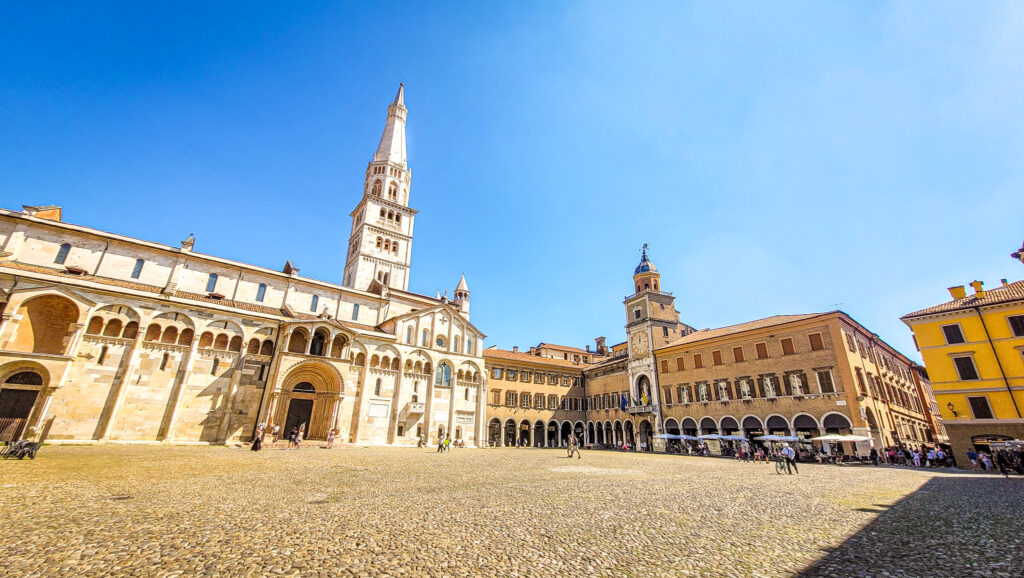
Enzo Ferrari Museum
The Enzo Ferrari Museum opened its doors to the public in 2012, and since then, it has become one of the most popular tourist attractions in Modena. The museum consists of two buildings, the Enzo Ferrari Museum and the Enzo Ferrari Museum Modena. The first is located in the city of Modena, while the second museum is located in the nearby town of Modena, Maranello
The Enzo Ferrari Museum houses a collection of cars and racing memorabilia, including vintage cars, Formula One cars, and a range of other cars from different periods in history. You can also find exhibits dedicated to Enzo Ferrari’s life, achievements, and the history of Ferrari. On the other hand, the Enzo Ferrari Museum Modena focuses on Enzo Ferrari’s personal life, architecture, and design.
One of the most striking features of the museum is its architectural design. The museum’s building was designed by Jan Kaplický, one of the most renowned architects of the 21st century. The building’s modern aesthetics and bold design are a testament to Ferrari’s legacy and vision. Visitors can take a guided tour of the building to get a better understanding of the museum’s design and architecture.
Apart from the museum’s permanent collections, the Enzo Ferrari Museum also hosts temporary exhibitions throughout the year. These exhibitions showcase works of art and design, and other artistic creations inspired by Enzo Ferrari and the world of Ferrari.
Palazzo Comunale
Another great monumental highlight to visit in Modena is Palazzo Comunale . The origins of Palazzo Comunale in Modena date back to medieval times, when the city was a bustling centre of commerce and trade. The first construction of the Palace dates back in 1141 under the guidance of the then Podestà Raniero. The building’s striking façade features alternating bands of white and pink marble, a typical feature of Romanesque architectural style. The Palace served not only as a seat of power but also as a symbol of civic pride and signified the city’s growing status in the region. The architects of the Palace incorporated religious and historical elements into the building’s design, including an impressive bas relief depicting the Three Wise Men and a statue of Boniface VIII, the Pope who first recognized Modena as a city.
Renaissance architecture
In the fifteenth century, Modena experienced a revival of arts and culture known as the renaissance . Palazzo Comunale was also expanded and beautified in a way that reflected the era’s ideals. The central courtyard, which features a picturesque colonnade, was added during this period, as well as the iconic medieval Clock Tower, Torre dell’ Orologio. The addition of the Clock Tower not only provided functional value to the building but has also become the city’s symbol as a place of tourism and culture. Other architectural features from this time period include the ornate frescoes, stucco work, and an impressive collection of historical artifacts and artworks.
Restorations
Over the course of centuries, Palazzo Comunale has faced challenges, including wars, fires, and structural damage. Throughout the modern era, the building underwent several restorations, but the architects have done a commendable job of preserving the structure’s historical and architectural essence. The restoration involved the use of innovative techniques and materials such as reinforced concrete and steel, which are intelligently hidden away so that the building’s original aesthetics could remain intact.
Palazzo Comunale is an essential cultural and historical destination for travellers and architecture enthusiasts. In addition to the fantastic architectural features, the Palace has a museum that features displays of the political and civic life of Modena, from the Roman era to the modern-day. During your visit, you will admire the magnificent rooms such as Salone del Guariento, in which the most important gatherings and meetings of the City Council were held. The frescoes, art collections, and historical artifacts give a glimpse into Modena’s rich cultural heritage.
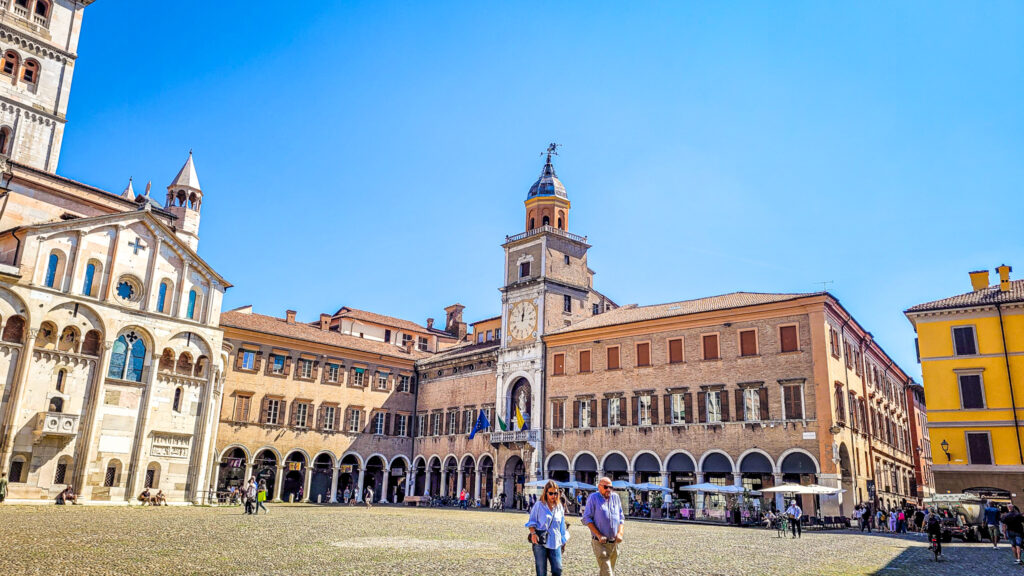
Taste Modena Balsamic Vinegar
Modena is renowned for its world-famous balsamic vinegar, which is made from local grapes and aged in oak barrels for several years. You can visit one of the local producers for a guided tour of the production process, followed by a tasting of this exquisite condiment. For itineraries and balsamic tasting tours go to Visit Modena for the latest updates.
Palazzo dei Musei
The history of Palazzo dei Musei in Modena dates back to the 18th century when it was built by Francesco Vandelli. The palace has been through various renovations over centuries to become what it is today. The building was originally designed to be a college for orphans and was later converted into a civic museum in 1861 to showcase the art collection of the Duke of Este. Palazzo dei Musei houses several museums, including the Civic Archaeological Museum, the Civic Museum of Ancient Art, the Este Gallery, and the Library.
Architecture
When it comes to architecture, Palazzo dei Musei is a visual feast for anyone who appreciates art. The building’s facade is an impressive example of Rococo style, with its elegant curves and elaborate decorations crafted by local artisans. The palace is also known for its beautiful inner courtyard, which is a fusion of different architectural styles, including baroque and neoclassical . The courtyards’ design is reminiscent of the Italian renaissance and features a fountain with sculptures and stuccoes of local heroes.
As you walk through the museum’s various halls and galleries, you will be amazed by the art collections from different eras. The Este gallery, for instance, is home to one of the most extensive collections of ancient art in Italy. The museum displays works of art from all over the world, including paintings, sculptures, and artefacts from ancient civilizations. You will also discover a vast collection of medieval and renaissance art, including some by famous Italian artists, such as Guido Reni, Bernini, and Correggio.
Palazzo dei Musei in Modena is not just a museum, but also a cultural hub for the city. Visitors can take part in various cultural activities, including workshops, seminars, and events, that take place regularly in the museum’s beautiful surroundings. The palace is also a popular venue for exhibitions and concerts.
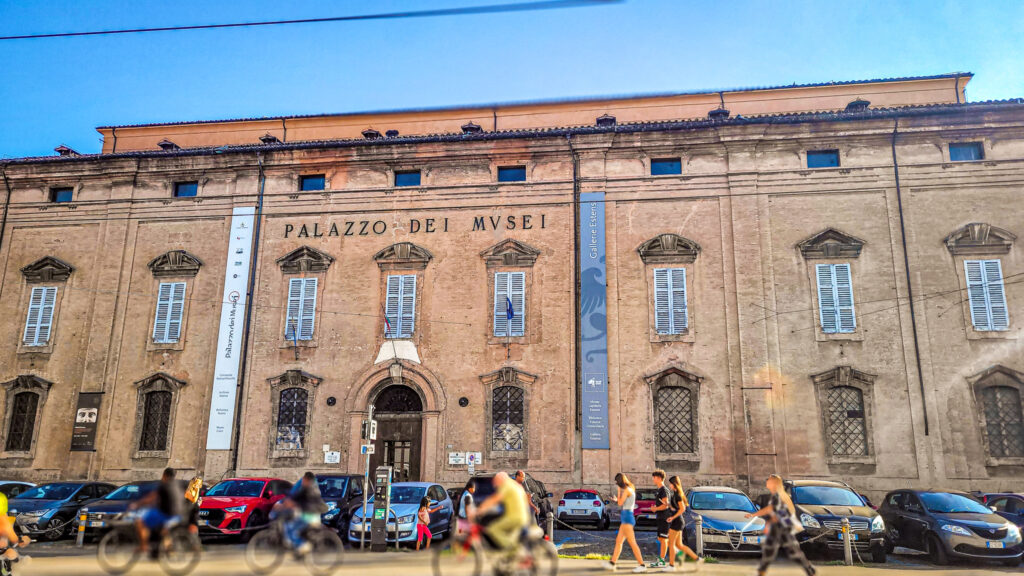
Parco Giardino Ducale Estense
The origins of the Parco Giardino Ducale Estense date back to 1634 when Francesco I of Este decided to build a beautiful country estate that would showcase his exquisite taste in art and architecture. The garden was meant to be an extension of his palaces and allow him to escape urban life. Designed by the famous landscapist, Giovanni Tommaso Francini and his assistant, Bernardino Facciotto, the garden boasted beautiful flower beds, lovely fountains, water features, and grottoes.
In the 18th century, Duke Francesco III d’Este, commissioned the construction of the splendid Palazzina dei Giardini. This unique building is an example of baroque architecture that perfectly blends with the natural environment, and it offers visitors a glimpse into the luxurious lifestyle of the Modenese aristocracy. The building is decorated with frescoes, stuccos, and paintings, and it hosts the Museum of Risorgimento and the Museum of the City of Modena, which features a rich collection of art from the 17th to the 19th centuries.
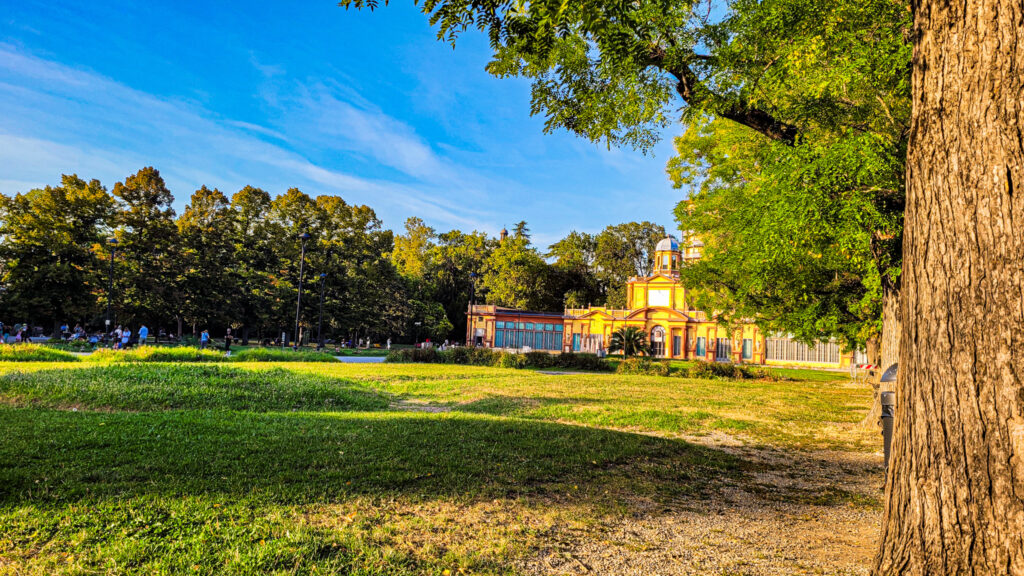
Palazzo Ducale di Modena
A short history of palazzo ducale di modena.
Palazzo Ducale di Modena was the official residence of the Este family, who ruled the Duchy of Modena and Reggio from the 14th to the 18th century. The original structure dates back to the medieval times but was subsequently expanded and modified over the centuries. During World War II, the palace was severely damaged and had to undergo extensive restoration in the 1950s.
The Architecture of Palazzo Ducale di Modena
The baroque architecture of Palazzo Ducale di Modena is a visual treat. The palace, which spans 34,000 square meters, is built around a central courtyard and has an impressive façade that is as strikingly beautiful today as it was centuries ago. The entrance to the palace is through a grand staircase that leads to the reception room, adorned with frescoes by renowned Italian artists. The palace is home to several rooms, each with its unique architecture and decor, including the Ducal Chapel, the Court Theatre, and Salone d’Onore.
The Artwork at Palazzo Ducale di Modena
Apart from the architecture, Palazzo Ducale di Modena is also home to an impressive collection of artwork. The palace has a historic art gallery that houses works by some of the most renowned Italian artists from the 16th to the 18th century. Some of the most famous pieces include the Annunciation by Guido Reni and Antea by Francesco Hayez. The palace also has a vast library with over 300,000 volumes, including rare manuscripts and antique books.
Exploring the Palazzo Ducale di Modena
Visitors to Palazzo Ducale di Modena can explore the palace either on their own or with a guided tour. The official tour takes you through the palace’s magnificent rooms, including the Court theatre, the Ducal Chapel, and the elegant Salone d’Onore. Visitors can also spend time admiring the architectural details and the artwork. The palace also has a beautiful garden that is open to the public and makes for a great place to relax and unwind after a tour. If you’re interested in a guided tour, you can make a booking through Visit Modena .
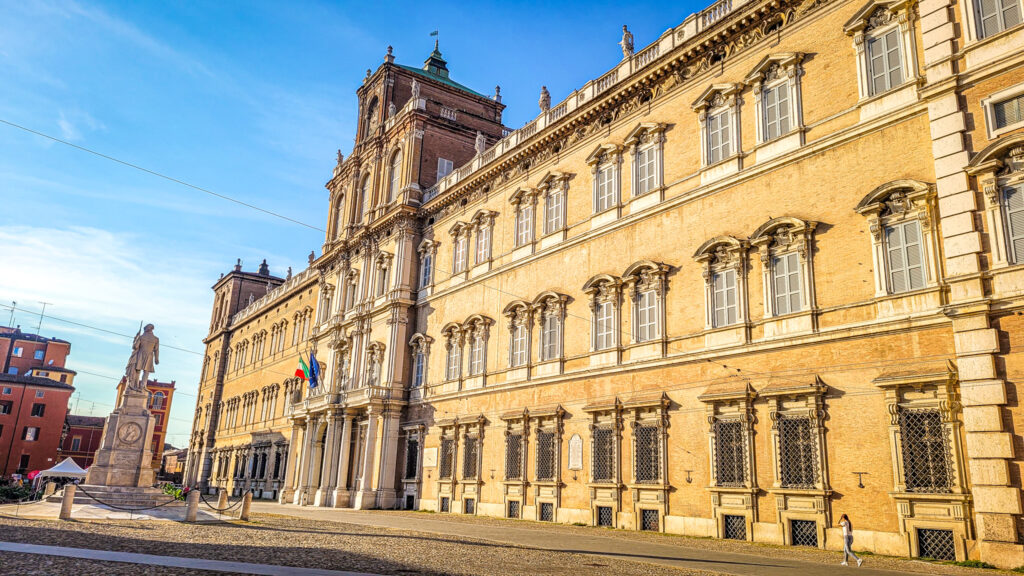
Teatro comunale Luciano Pavarotti
The Teatro Comunale Luciano Pavarotti is a magnificent creation completely finished in the neoclassical style. Built by Architect Marco Zanuso in 1841, it exemplifies modish design and placement. Its imposing neoclassical façade, with its grand entrance, six Ionic columns, and unique rectangular-shaped and imposing dome are some of its main highlights. Upon entering the building, visitors are greeted with lavish interiors that feature sprawling staircases, historic paintings, crystal chandeliers, and gilded gold mirrors, all hallmarks of the grand Italian architectural tradition.
The Teatro Comunale is especially revered for the opera performances it stages. Walking onto the stage of Teatro Comunale might even make you experience a sense of standing where some of Italy’s most celebrated singers performed. The theatre’s rich history ranges from hosting spectacular performances to showcasing world-famous operas and plays. As an Italian cultural monument, it is a historical and grand establishment that continues to be an artistic cornerstone of northern Italy.
The Teatro Comunale is unique in its role as a community theatre, which is not to say it is a small-scale or amateur theatre. It stages some of the most significant and grand performances in all of Europe. The theatre also possesses modern lighting and advanced audiovisual equipment, which give an edge over any other conventional theatre. It keeps the theatre contemporary and maintains the high standard of excellence.
One of the main highlights is a remarkably preserved liberty-style foyer. It was inaugurated on October 12th, 1913, and it has been preserved in its entirety. This includes its adornment of paintings, sculptures, crystal chandeliers, and parallel staircases that lead to the grand hall. Walking through the foyer is like stepping back in time, into the Italian Belle Époque.
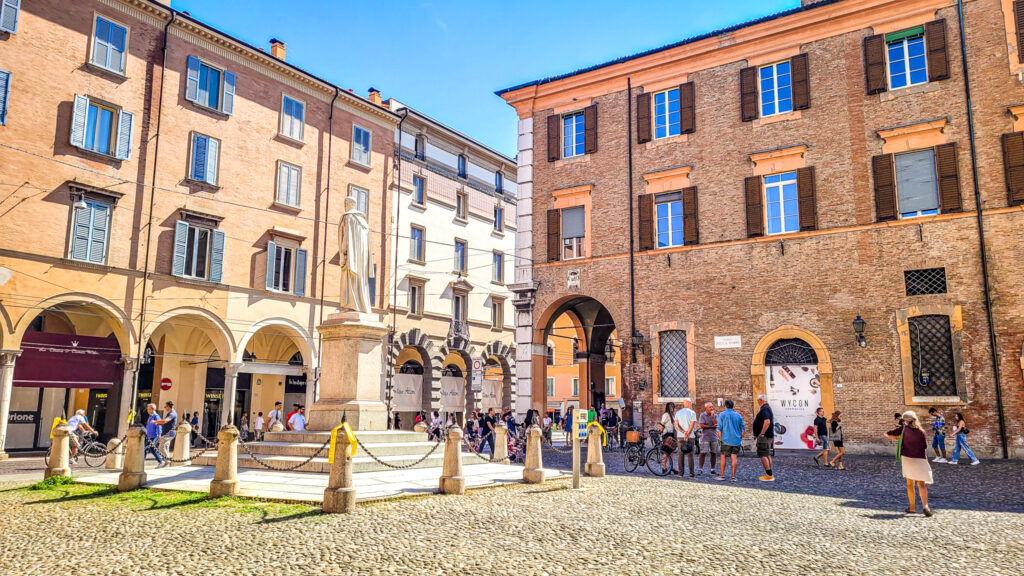
Casa Museo Luciano Pavarotti
Casa Museo Luciano Pavarotti is not located in the city but it’s an amazing monumental highlight to visit when you are a fan. To comprehend the magnitude of Pavarotti’s contribution to the world of music, one must explore Casa Museo Luciano Pavarotti . The tenor purchased the mansion in 1975, which is known as Villa Cialdini, and lived here until his death in 2007. The museum is divided into two parts: the first part exhibits Pavarotti’s music studio, living room, dining room, library, kitchen and bedroom. Each room is decorated elegantly with sumptuous furnishings and artwork, providing visitors with a glimpse into Pavarotti’s life when he wasn’t onstage. In the second part of the museum, visitors can find Pavarotti’s most treasured instruments, recordings, correspondence, photos, and newspaper articles collected throughout his musical career.
Apart from the rich artefacts on display, the architecture of the museum is also one of its most striking features. The villa’s architectural style is distinctive to the region and is a beautiful example of the 19th-century landscape that has been preserved through the years. The villa built in a neoclassical style with a beautiful sloping roof, is surrounded by a wide park, a vineyard and beautiful garden with colourful flowers. Visitors can enjoy the picturesque views of the countryside from the verandas of the mansion and admire the grandeur of architectural design that is both regal and extravagant.
Pavarotti’s music studio
One of the highlights of the museum, however, is the grand piano situated in Pavarotti’s music studio. Designed by the famous architect Renzo Piano, the music studio is an incredible collaboration between Piano and Pavarotti, and it still inspires awe and wonder in visitors to this day. The amphitheatre-like structure of the studio with its curved walls produces an exceptional acoustic effect, which made it to be known as one of the best acoustical spaces in the world.
Pavarotti’s library
Besides the music studio, the museum’s library is also a thing of beauty. With floor-to-ceiling bookshelves, carved wooden desks and armchairs, the library showcases Pavarotti’s deep appreciation for literature. This room screams of luxury and elegance, as it reflects Pavarotti’s interest in culture and knowledge that went beyond music.
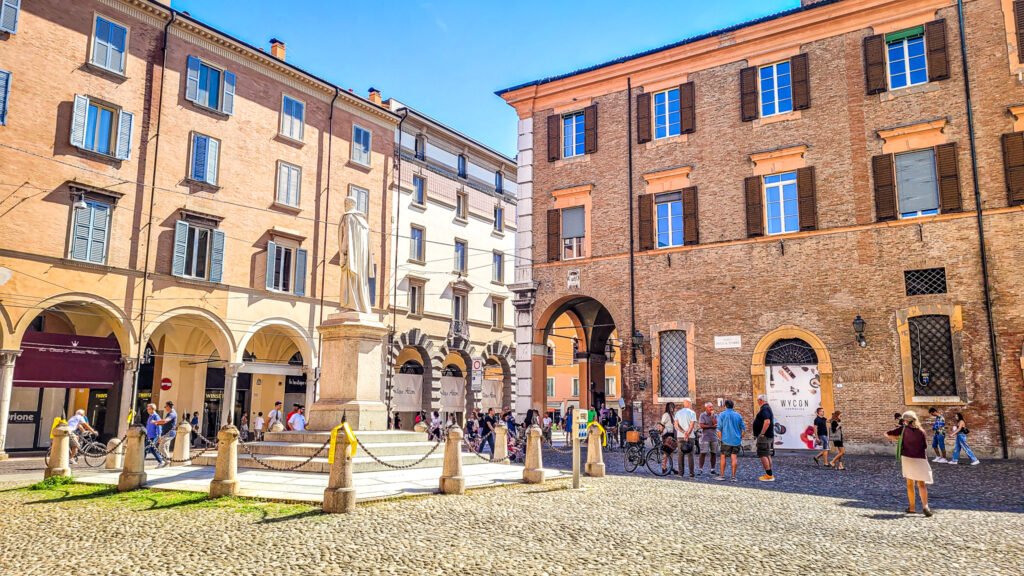
Monumental highlights in Italy
Experience the allure of Italy’s rich historical sites. Explore the best monumental highlights to visit in Bologna . It’s one of Italy’s most underrated cities, no joke! It’s got a crazy long history dating back to the renaissance period, loaded with culture, art, and amazing food. Delight in the flavours of Parma ham in Parma, while appreciating the city’s captivating history and architecture. Marvel at the charming houses along the picturesque Italian Riviera coastline at Cinque de Terre. Explore Florence, the city where Leonardo Da Vinci lived and worked, and make sure to carve out time to visit the Uffizi Gallery, one of the most renowned museums in the world. Exploring Rome presents an incredible chance to delve into the captivating history of the Roman Empire. Don’t miss out on this amazing opportunity when you have some spare time!
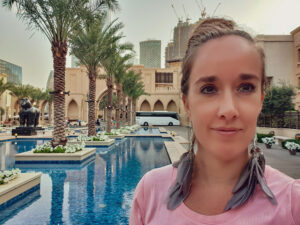
Hola, I'm Adriana. I'm Dutch and living in Antwerp, Belgium. After graduating from university I went to Nepal for one month. Somehow this short trip became a 18-month journey in Asia and I spend most of that time in the incredible and hectic subcontinent of India...😁
I work as freelance chef in Belgium. And sometimes as TripLeader for JoinMyTrip. Would you like to join me on one of my trips? Go to the page JoinMyTrip and check out upcoming trips.💚
Jewellery shop
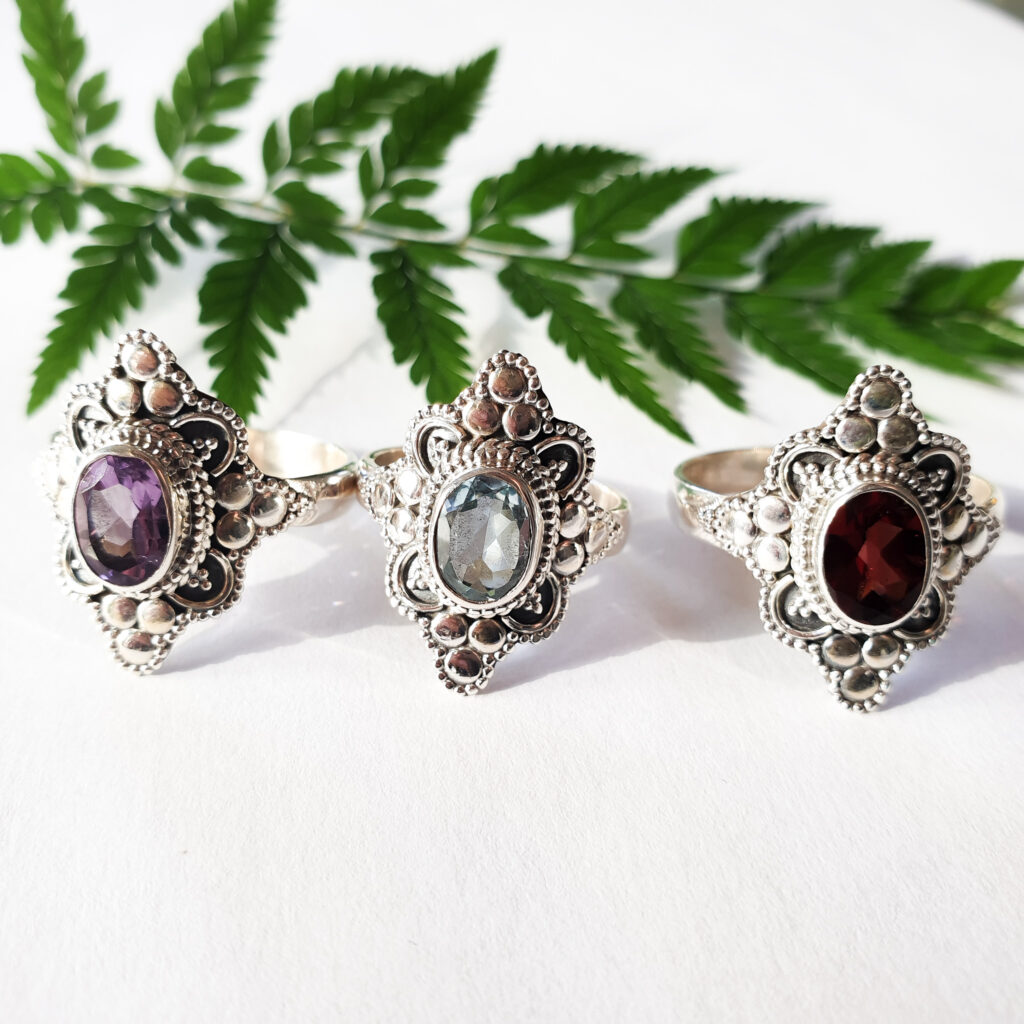
Handmade jewellery
Explore ITWJ collection of sterling silver jewelry at our Etsy shop . Each piece is meticulously handcrafted in Jaipur , India , showcasing the artistry of skilled artisans. ♡🌿
Public transport Asia
This post has 2 comments.
Wauw wat een goed ges hoeven artikel. Je moet een boek gaan schrijven.
Goed geschreven
Leave a Reply Cancel reply
Save my name, email, and website in this browser for the next time I comment.
Notify me of follow-up comments by email.
Notify me of new posts by email.
This site uses Akismet to reduce spam. Learn how your comment data is processed .
Namaste! Control your own cookies.
Privacy overview.

How to Spend the Perfect One Day in Modena, Italy
- February 26, 2024
- by Jenoa Matthes

Planning to spend one day in Modena? We’re sharing all you need to know in this guide.
Modena is a charming city located in the Emilia Romagna region of northern Italy. It is famous for two things: Balsamic Vinegar and Ferrari.
You can easily visit Modena on a day trip from Bologna, Parma, or Milan. We recently spent a week in Modena, and based on our experience, there are two ways that you can spend a day in Modena.
In this guide, you will find two day trip itineraries. The first one is a Ferrari itinerary for those looking to visit both of the Ferrari Museums around Modena. The second one is a foodie itinerary for those looking to taste and learn about the local cuisine.
Here is our guide to one day in Modena, plus all of our tips to help you plan the perfect day.
Ferrari Itinerary: One Day in Modena
This itinerary is built for those looking to visit both the Enzo Ferrari Museum in Modena and the Ferrari Museum in Maranello, just outside of Modena.
Pay attention to the times listed below, as you’ll need to arrive at the museum in the morning in order to catch the shuttle bus on time to Maranello.
Enzo Ferrari Museum

Get to the Enzo Ferrari Museum right when it opens at 9:00am or 9:30am depending on the month. You can check the opening hours online at the official website.
The Enzo Ferrari Museum focuses on the history of Ferrari and its founder, Enzo. It features vintage cars, engines, drawings, and you can even take a peek at Enzo’s original office.

The museum is located outside of the city center and is a 15-minute walk from Piazza Grande. You only need about an hour to visit this museum.
There is a cafe inside with sandwiches, drinks, and other snacks if you need to pick up something for breakfast.

If you are visiting both Ferrari museum, then purchase the combined ticket to save money.
Tickets: €27 per adult. Combined ticket option for both the Enzo Ferrari Museum + the Maranello Ferraro Museum is €38 per adult. Purchase your tickets online at the official website.
Ferrari Museum in Maranello

Unless you have a car, you need to take either the public bus or the Ferrari shuttle bus to Maranello. We suggest taking the shuttle to Maranello, since it is faster and stops outside of the Enzo Ferrari museum.
The bus arrives outside of the Enzo Ferrari museum at 10:45am, make sure to get there 5 minutes beforehand. You need to purchase your shuttle tickets online at Vivara Viaggi. These book up and there may not be seats if you don’t purchase in advance.

The Ferrari Museum is located in Maranello where the first factory was built and where it still is today. Inside of the museum, there are a mix of vintage cars, current models, and futuristic prototypes.

For an additional cost, you can sign up for one of these extra activities in Maranello:
- F1 and GT Simulators
- Factory and Track Tour
Make sure to book these online a few weeks in advance – time slots book up fast. We tried to reserve these on the day of and they were sold out.
If you want to test drive a Ferrari around Maranello, you can book this tour where you get to drive a Ferrari car between 10 minutes to 2 hours, depending on what you book.

You could easily spend a whole day here if you book the panoramic factory and track tour and do the simulators. Otherwise, if you just walk through the museum, plan on spending 1.5 hours here.
Tickets: €27 per adult. There is a combined ticket option for both the Enzo Ferrari Museum + the Maranello Ferraro Museum that is €38 per adult. Purchase your tickets online at the official website.
Hours: Opening times vary depending on the month. Check out the official Ferrari museum website for up-to-date information.
Taking the public bus: The shuttle bus doesn’t leave the museum in Maranello until 2:45pm. We finished our tour of the museum earlier than that and took the public bus back to Modena. If this is the case for you, take the public bus #815 back to Modena.
You can purchase your tickets with contactless payment on the bus or at a tobacco shop in Maranello. The ride takes about 45 minutes to 1 hour depending on traffic.
Ghirlandina Tower

You should have enough time for a few activities in Modena after your morning at the Ferrari museums. The first thing we recommend doing is climbing the Ghirlandina Tower, which towers over the city of Modena.

You can climb the 200 steps up this 12th century bell tower for spectacular views overlooking Modena.
The hours vary, so it’s best to double check online at the official website . You need to reserve a time slot in advance online here.
READ ALSO: 19 Best Things to do in Modena
Duomo di Modena

Just a few steps from the Ghirlandina tower is the Duomo di Modena (Modena Cathedral), the most important cathedral in the city. This Romanesque cathedral dates back to the 12th century and is a UNESCO World Heritage Site.
The Cathedral is open Tuesday to Sunday, from 7:00 am to 7:00 pm. On Mondays, it has a split opening hours, you can access it between 7:00 am and 12:30 pm and then from 3:30 pm to 7:00 pm.
Admission to the Duomo is free.

Dinner at local restaurant

Head to one of Modena’s top-rated restaurants for some traditional Emilia Romagna cuisine. From 3-star Michelin restaurants, including one of the best restaurants in the world, to classic Italian trattorias, you have many fantastic options to choose from.
Check out our Modena restaurant guide below for some ideas. Make sure to call ahead and make your reservation a few days in advance.
Late night gelato

Gelateria Bloom is the best gelato shop in Modena. They scoop up unique flavors that are made with fresh and local ingredients.
Try one of their seasonal flavors, like pumpkin in the fall, for something a little different.
Foodie Itinerary: One Day in Modena
This itinerary is designed for those looking to get a taste of the local cuisine in Modena. Your morning will be spent on a food tour either around Modena or to a local acetaia.
Afterwards, you have time to explore some of the main attractions in the city.
Take a Food Tour

Modena is located in the heart of the Emilia Romagna region, which is also known as Italy’s Food Valley. The food produced in this region includes some of Italy’s most famous products, such as Balsamic Vinegar, Parmigiano Reggiano, Prosciutto di Parma, Mortadella, and the list goes on…
Modena is famous for its traditional balsamic vinegar, which aged for a minimum of 12 years in wooden barrels.

The best way to get a taste of the flavors and unique foods from Modena is to go on a food tour.
You have a couple of options for your food tour. You can either take a 4-hour walking food tour around Modena or you can opt to go on a balsamic vinegar tour where you visit a traditional acetaia with tastings.
Here are two tours that we recommend:
- Modena Food Tour: A 4-hour tour of Modena with tastings of different specialties, such as Balsamic Vinegar, Lambrusco Wine, Tigelle, and more.
- Balsamic Vinegar Tour: Spend 2 hours touring a historic acetaia with the owners. You will learn about the process of making traditional Balsamic Vinegar and enjoy lunch at the house. Pick up from Modena is available for an extra fee.
Both tours are fantastic options, we’ve taken the food tour in Modena a couple of times, and it’s a great way to taste a lot of food in a short amount of time. Plus you learn about the history of the city while walking around with your guide.
Of course, if you have more than one day in Modena, we suggest doing both.

After your food tour, you have time in the afternoon to visit some of Modena’s main sights. The Ghirlandina tower is an 86-meter-tall bell tower built in the 12th century.
You can climb to the top, 200 steps, for incredible panoramic views looking over the entire city of Modena.

Reserve your entry time online and pay upon arrival. The fee is €3 per adult with discounted rates available for students and children. The hours are a bit random, so make sure to check opening times here.
Just a short walk from the tower is the Duomo di Modena (Modena Cathedral.) This 12th century church is one of the city’s UNESCO World Heritage Sites and is an important Romanesque church in Italy.
Piazza Grande

Piazza Grande is Modena’s central square, and is also one of the city’s UNESCO World Heritage Sites. Surrounding this historic piazza is the Modena Cathedral, Ghirlandina Tower, and the Palazzo Comunale.
Several cafes line the square, and it’s a lovely spot to grab a coffee in the morning or an aperitivo before dinner and people watch. Many of the city’s festivals and events take place here as well.
Palazzo dei Musei

Just a 7-minute walk from Piazza Grande, the Palazzo dei Musei houses several museums that are worth visiting. We spent a couple of hours here and were impressed with the collection of artworks.
If you only have time to visit one museum within the palace, then make sure to visit the Galleria Estense, located on the top floor. The gallery originally opened in 1854 by the Este family that ruled the region.

The collection of art is impressive and includes a marble masterpiece by Bernini called the “Bust of Francesco I d’Este” and “Madonna and Child” by Correggio.
We also recommend walking around the Estense Lapidary Museum and the Giuseppe Graziosi Museum, which are both located in the courtyard on the ground floor.

I personally enjoyed the Civic Museum which displays artifacts and objects from around the world dating back to the Paleolithic times. It includes everything from ancient pottery and coins to fabrics from the the 1800s.
Practical info: The Galleria Estense costs €8 to visit. All of the other museums are free. Hours vary for each museum – please see the official websites below for accurate and up-to-date times.
- Galleria Estense hours
- Civic Museum hours
- Estense Lapidary Museum
Ducal Palace

This beautiful, Baroque palace was once a royal residence of the Este Family. Today, the palace hosts the Italian Military Academy, and because of this, you unfortunately cannot visit the inside of the palace.
Instead, admire it from the outside at one of Modena’s largest squares – Piazza Roma. Next to the palace is both San Domenico church and the Ducale Estense Gardens if you want to have a wander around those as well.
Wander the streets

After a busy day of eating and sightseeing, take it slow and get lost in the streets of Modena. Admire the city’s bright orange and yellow-colored buildings and wander underneath the porticoes.
Take a peek into some of the shops around town, grab a gelato at Bloom , or enjoy a late afternoon drink from Giusti Caffetteria .
Dinner at a local restaurant
Whether you have reservations at Osteria Francescana , Italy’s most famous restaurant, or at a local restaurant serving traditional food, the culinary scene in Modena is incredible.
Check out our food guide below for our top restaurant recommendations in Modena.
Map for your Modena Day Trip
This map includes the best things to do during your one day in Modena, plus the best places to eat. You can use it to easily navigate your way around town.
To save the map to Google Maps on your phone or computer, click on the star next to the title. Once you do this, you’ll be able to find the map in your “saved maps” list on your phone.
To see a list of all the items on the map, click the box with arrow on the left. To enlarge the map, click the box on the right.
Foods to Try in Modena

From fresh pasta to red wine, cheese, and other local delicacies, Modena has a rich gastronomic heritage and is renowned for its delicious food.
Here are some of the foods and drinks you must try while in Modena:
- Traditional Balsamic Vinegar: A delicacy from Modena aged for a minimum of 12 years with rich and complex flavors.
- Gnocco Fritto: Light and airy bread fried in lard, often served with cured meats and cheeses with aperitivo or as an appetizer.
- Parmigiano Reggiano: The world-famous cheese known for its savory and strong flavor, aged for 12-36 months, and a staple of Emilia Romagna cuisine.
- Tortellini: A small, hat-shaped pasta filled with a mix of meats (often pork) and served in a broth or cream sauce.
- Tortelli: A stuffed pasta often filled with ricotta and spinach or pumpkin.
- Lasagne al Ragu: A layered pasta dish (often with green noodles) with ragu, bechamel sauce, and Parmigiano Reggiano cheese, baked to perfection.
- Tagliatelle al Ragu: The region’s most famous pasta. Made with ribbon-lake pasta and served with a rich meat sauce. Our personal favorite dish.
- Cotecchino: A pork sausage that is mixed with herbs creating a rich flavor. Get the cotecchino sandwich from Bar Schiavoni in the Albinelli market – it’s incredible.
- Tigelle: Small, round, flat breads, traditionally cooked in a clay disk, and served with meats and cheeses.
- Lambrusco: A sparkling red wine from the Modena region that pairs well with the region’s rich and hearty dishes.
Where to Eat in Modena

We’ve compiled this list of Modena restaurants from our various visits to the city. All of these are recommendations from locals, so you’re in good hands.
- Osteria Francescana |One of the world’s best and most famous restaurants in the heart of Modena. This 3-star Michelin restaurant by Massimo Bottura is renowned for its unique take on Italian cuisine. To get a seat at a table here, you must book months in advance.
- L’Erba del Re | With a blend of modern and classic Emilian cuisine, this 1-star Michelin restaurant is a more affordable and excellent fine dining option in Modena.
- Bar Schiavoni | Our favorite sandwich shop in Modena, located at the Mercato Albinelli. Try their seasonal specialty, or simply try the best – the cotechino sandwich.
- Trattoria Aldina | This unassuming restaurant is located across from the Mercato Albinelli on the second floor of the building. They serve up hearty and classic dishes from the region, and the portion size is generous as well!
- Da Danilo | This is the place to go if you want to try a variety of traditional cuisine from Modena.
- Trattoria Bianca | Located outside of the city center near Modena’s train station, this trattoria came highly recommended by a Modenese local.
- Salumeria Hosteria Giusti | You can buy a variety and meats from this historic delicatessen, or you can opt to have lunch at their restaurant, which is highly rated.
Make sure to either reserve online or call ahead at least a week in advance for most restaurants in Modena. For the Michelin-rated restaurants, you need to reserve those months in advance.
How to Get to Modena

The most convenient way to get to Modena is by train. Modena’s train station is about a 15-minute walk from the center and services both regional trains and high-speed trains.
If you are traveling on a high-speed train, make sure to purchase your tickets 2-3 weeks in advance to get the best prices. You can book tickets online at Trenitalia.com . We have the Trenitalia app downloaded and use it to purchase all of our train tickets in Italy.
For regional trains, you should be okay to purchase tickets at the train station before departure, as prices for these trains don’t fluctuate as much.
Bologna to Modena
- Train: The train ride from Bologna to Modena is quick, between 17-30 minutes, making for an easy day trip or transfer. Catch the train at Bologna Centrale Train Station , which is a 20-minute walk from the center of Bologna.
- Driving: The drive to Modena from Bologna takes about 45 minutes on the A1/E35. This route has tolls. If you prefer to avoid tolls, then take the SS 9 Via Emilia, which takes about 48 minutes. There are parking lots outside of Modena city center.
Milan to Modena
- Train: From Milano Centrale station, you can catch a direct train to Modena that takes around 2 hours and 15 minutes. There is a high-speed train from Milan that stops over in Bologna, but it costs a lot more and is only 20 minutes faster. We suggest booking the regional train.
- Driving: While we don’t recommend driving from Milan, if you are renting a car, the drive takes 2.5-3 hours with tolls.
Parma to Modena
- Train: From Parma, the train ride to Modena is only 30-38 minutes. This is a direct journey with trains leaving Parma several times per hour.
- Driving: The drive from Parma to Modena takes 45 minutes on the A1/E35 with tolls, or 50 minutes without tolls. Parking is available in Modena near the train station.
Venice to Modena
- Train: From Venice S. Lucia station, you can either hop on a high-speed or regional train. The high-speed train takes 2.5 hours and costs double the amount of the slower train. The regional train takes 3 hours 18 minutes. Both have a stopover in Bologna.
- Driving: The drive from Venice to Modena only takes about 2 hours with tolls.
Where to Stay in Modena

- Luxury hotel: Hotel Rua Frati 48 in San Francesco | This 5-star hotel is centrally located and features beautiful, spacious rooms with modern amenities, such as WiFi and air conditioning.
- Boutique hotel (Our top pick!): Salotto delle Arti | Located just a 5-minute walk from Piazza grande, this charming hotel features four poster beds, frescoed ceilings, and traditional Italian decor.
- Mid-range hotel: PHI Hotel Canalgrande | This traditional hotel is more affordable than most hotels in Modena and has air conditioned and spacious rooms.
- Apartment: Domus Tua | This gorgeous apartment is located in the Piazza Grande with views of the duomo. It has a fully equipped kitchen and air conditioned rooms.
One Day in Modena Frequently Asked Questions

Is One day enough for Modena?
Yes, one day in Modena is enough time to see the main sights. However, if you want to take a day trip around the region, or want to experience both a food tour and the Ferrari museums, then we suggest 2 days in Modena.
Is Modena worth visiting?
Yes, Modena is worth visiting. If you love food, cars, and charming Italian cities, then Modena will check off all of your boxes.
Can I visit Parma and Modena in one day?
We don’t recommend visiting both Parma and Modena in one day. Technically, you can, but you won’t have time to see all of the main attractions in both cities. We suggest spending one full day in Parma and another day in Modena.
More Information for your Trip to Italy
- One Day in Bologna
- One Day in Parma
- Bologna to Modena Day Trip
- Best Day trips from Bologna
- Best Things to do in Bologna
- Best things to do in Parma
ITALY TRAVEL PLANNING GUIDE Italy Travel Insurance – Should you get travel insurance for Italy? YES! We always get travel insurance before all of our trips for peace of mind. Check out Travel Insurance Master to find the best plan for you. Italy Rental Cars – Is it safe to rent a car in Italy? Yes! We’ve rented a car in Italy too many times to count, and it’s definitely the most convenient way to get around the countryside. We rented our car through Discover Cars (our go-to rental agency), which helps you find the best rates no matter where you are traveling. Italy Phone Plans – If your phone plan does not offer free coverage in Italy, then we suggest getting an eSIM. We used Airalo during our trip to Italy, and we had fantastic coverage the entire time. It’s easy to download and you can even top up via the app if needed. Italy Hotels – Wondering where to book your accommodations for Italy? We’ve been reserving all of our hotels through Booking for years. Their messaging tool makes it easy to communicate with the hotels, and there are endless options to choose from.
Leave a Reply Cancel reply
Your email address will not be published. Required fields are marked *
Save my name, email, and website in this browser for the next time I comment.
Copyright © 2024 | THE TRAVEL FOLK
ITALIANO - ENGLISH
Milan duomo virtual tour.
Thanks to 3D technology, you can explore the most secret corners of the Historical Complex and discover all the artistic treasures guarded for centuries with great commitment, love, and care by the Veneranda Fabbrica del Duomo.
Through your virtual tour, thanks to the Milan Duomo Card, you can support the restoration of the Cathedral.
Do you want to organise an exclusive personalised virtual tour accompanied by a guide?
Do you need assistance?
Click and discover the demo of the virtual tour presented by Gerry Scotti

You can navigate through the following areas, discovering the most surprising details, enriched by videos and insights: Cathedral, Archaeological Area, Terraces, Museum of the Cathedral, Church of San Gottardo in Corte and Archives of the Veneranda Fabbrica.

Duomo Rooftops

Duomo Cathedral

Iemale Chapel – Crypt of Saint Charles

Archaeological Area: The Baptistery of San Giovanni alle Fonti

Duomo Museum

Church of San Gottardo in Corte

Veneranda Fabbrica del Duomo Archive
Da martedì a domenica: aperto ( orari stagionali). Lunedì: chiuso
Via Lanfranco, 4 - 41121 Modena
(+39) 059 216078
Inviaci una e-mail
- Scuola dell’infanzia
- Scuola Primaria
- Scuola Secondaria 1° grado
- Scuola Secondaria 2° grado
- Aperture/Chiusure Straordinarie
- Attività per bambini
- Visite Guidate
Info e Prezzi
I biglietti.
Ingresso € 6.00
Ingresso ridotto € 4.00
Ingresso Ridotto
- Studenti di ogni ordine e grado fino a 25 anni
- Adulti al di sopra dei 65 anni
- Gruppi organizzati (oltre le 15 persone)
- Sacerdoti e religiosi
- Ingresso ridotto scolaresche: € 2.00
Ingresso Gratuito
- Bambini fino a 6 anni
- Disabili e loro accompagnatore
- Docenti accompagnatori di scolaresche
- Guide turistiche, interpreti e giornalisti nell’esercizio della professione
La biglietteria chiude mezz’ora prima della chiusura del museo
Per prenotazioni e informazioni su orari e/o biglietti si prega di scrivere a [email protected]
Orari di Apertura
10.00 · 14.00 / 15.00 · 19.00 sabato e domenica
Chiusura Lunedì
Altre Informazioni
Prenotazione visite guidate, modulistica, accessibilità per disabili.

IMAGES
VIDEO
COMMENTS
Florence duomo tour are Selling Out Fast. Book Now to Avoid Disappointment. Best Things to Do in 2024 in Florence. Free Cancellation & Full Refund Available.
Visita virtuale al Sito Unesco di Modena. a cura dell'Ufficio Coordinamento Unesco | Museo Civico d'Arte di Modena.
Modena | Virtual tour generated by Panotour. Virtual tour generated by Panotour.
Comune di Modena. Coordinamento sito Unesco c/o Museo Civico d'Arte Viale Vittorio Veneto, 5 - 41124 Modena Telefono: +39059 2033122 - Fax: +39 059 2033110
Nel cuore di Modena sorge la splendida Piazza Duomo, il luogo in cui si affaccia la millenaria Cattedrale Metropolitana di Santa Maria Assunta in Cielo e San Geminiano, nota semplicemente come il Duomo di Modena. La chiesa, capolavoro romanico del XII secolo, è stata inserita assieme alla Ghirlandina (la sua torre campanaria) tra i monumenti ...
History of the Modena Cathedral. The foundation stone for the new Cathedral was laid on 9 th June 1099, incredibily when the archibishop's see was vacant.The Modenese community desired a new Duomo to finally put their Patron Saint Geminiano (312-397) to rest. The architect was Lanfranco; the sculpture-work by Wiligelmo.The construction went ahead fast from the apses, and in 1106 the Saint ...
Modena Cathedral (Italian: Cattedrale Metropolitana di Santa Maria Assunta e San Geminiano but colloquially known as simply Duomo di Modena) is a Roman Catholic cathedral in Modena, Italy, dedicated to the Assumption of the Virgin Mary and Saint Geminianus.Formerly the seat of the Diocese, later Archdiocese, of Modena, it has been since 1986 the archiepiscopal seat of the Archdiocese of Modena ...
The Duomo of Modena is considered to be one of the best examples of Romanesque architecture. It is one of several religious buildings from the Middle Ages recognized by UNESCO. ... Musei del Duomo di Modena. Address: Via Lanfranco, 4 - 41121 Modena. Phone: (+39) 059 216078. Email: [email protected]. Email: bookshop ...
Al link https://salestoriche.unesco.modena.it/ è invece disponibile "Il Palazzo Comunale di Modena si presenta", una visita virtuale per scoprire online le sale storiche del Palazzo di piazza Grande, nel sito Unesco patrimonio dell'umanità con Duomo e Ghirlandina. Grazie alle tecnologie digitali, per le festività si potrà, restando a ...
Visita-1. Descrizione. Fondato il 9 giugno del 1099, il Duomo di Modena è un meraviglioso esempio di arte romanica. L'incarico di progettare la Cattedrale fu affidato a Lanfranco il quale diede vita a un'architettura nuova che influenzò profondamente l'arte romanica fiorita dopo di lui. Sulla struttura si innestò, in uno straordinario ...
Manuale. Il duomo di Modena, il cui nome ufficiale è cattedrale di Santa Maria Assunta in Cielo e San Geminiano, è il principale luogo di culto della città di Modena, chiesa madre dell' arcidiocesi di Modena-Nonantola . Capolavoro dello stile romanico, la cattedrale è stata edificata dall'architetto Lanfranco nel sito del sepolcro di san ...
The Duomo Museum bookshop which was entirely refurbished in 2016, offers visitors a vast range of publications regarding the Cathedral, both specialized and academic, in a number of languages. In addition gifts or souvenirs can be chosen from our large range of postcards and gadgets (T-shirts, bags, prints, mugs, alloy reproductions, etc.).
For information regarding the guided tours please contact IAT in Modena at this number: (+39) 059 2032660. Special offers for travel agencies and tour operators are available. ... Musei del Duomo di Modena. Address: Via Lanfranco, 4 - 41121 Modena. Phone: (+39) 059 216078. Email: [email protected].
I Musei del Duomo - VisitModena. I Musei del Duomo, collocati all'interno dell'area di rispetto del Sito Unesco di Modena, completano la visita alla Cattedrale permettendo di comprenderne a pieno l'arte e la storia.
Le 3 curiosità sul Duomo. 1) L'Osso di balena. Se ti trovi nel bel mezzo di Piazza Grande, proprio di fronte alla Porta Regia, alza lo sguardo e, dietro alla statua di San Geminiano, potrai scorgere un "osso di drago" dalla forma ricurva. Sembra sia stato ritrovato duranti gli scavi per la costruzione del Duomo e dato che l'uomo del ...
Visita virtuale. Fondato il 9 giugno del 1099, il Duomo di Modena è un meraviglioso esempio di arte romanica. L'incarico di progettare la Cattedrale fu affidato a Lanfranco il quale diede vita a un'architettura nuova che influenzò profondamente l'arte romanica fiorita dopo di lui. Sulla struttura si innestò, in uno straordinario rapporto di ...
Enzo Ferrari Museum. The Enzo Ferrari Museum opened its doors to the public in 2012, and since then, it has become one of the most popular tourist attractions in Modena. The museum consists of two buildings, the Enzo Ferrari Museum and the Enzo Ferrari Museum Modena. The first is located in the city of Modena, while the second museum is located in the nearby town of Modena, Maranello
Duomo di Modena Tour: le attività più consigliate. 1. Tour a piedi della città di Modena. Il tour accompagna i visitatori in una piacevole passeggiata nel cuore di Modena. Di particolare interesse è il meraviglioso complesso romanico medioevale che comprende il Duomo di Modena, la Torre Ghirlandina e Piazza Grande. Insieme, questi monumenti ...
Just a few steps from the Ghirlandina tower is the Duomo di Modena (Modena Cathedral), the most important cathedral in the city. This Romanesque cathedral dates back to the 12th century and is a UNESCO World Heritage Site. The Cathedral is open Tuesday to Sunday, from 7:00 am to 7:00 pm.
Orari e costi. A causa dell'emergenza sanitaria in corso orari di apertura e modalità di accesso possono subire variazioni. Tutte le informazioni aggiornate su orari, costi e prenotazioni per Duomo, Ghirlandina, Palazzo Comunale, Acetaia Comunale e Musei del Duomo sono reperibili ai seguenti indirizzi: visitmodena.it. Musei del Duomo di Modena.
Comune di Modena. Coordinamento sito Unesco c/o Museo Civico d'Arte Viale Vittorio Veneto, 5 - 41124 Modena Telefono: +39059 2033122 - Fax: +39 059 2033110
Milan Duomo Virtual Tour. Thanks to 3D technology, you can explore the most secret corners of the Historical Complex and discover all the artistic treasures guarded for centuries with great commitment, love, and care by the Veneranda Fabbrica del Duomo. Through your virtual tour, thanks to the Milan Duomo Card, you can support the restoration ...
The Veneranda Fabbrica offers to voluntary associations, social organisations and people with disabilities or special needs personalised itineraries based on the group's various needs to discover the cultural heritage of the Duomo di Milano. To organise your visit and to make bookings: Education Department. +39 02 361691 - Int.3.
Potrete trovare tutte le informazioni aggiornate riguardanti visite guidate contattando lo IAT di Modena al numero: (+39) 059 2032660. Per agenzie di viaggio e tour operator sono previste offerte dedicate. Per informazioni contattare: [email protected]. ... Musei del Duomo di Modena. Indirizzo: Via Lanfranco, 4 - 41121 Modena. Telefono: (+39 ...